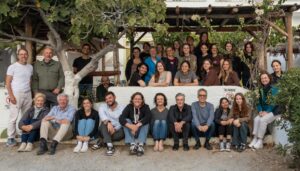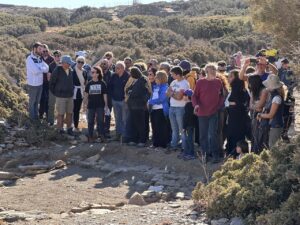 by Irma Havlicek
by Irma Havlicek
Powerhouse Museum web producer
Travel is an important part of the life and work of an archaeologist. They must go where the archaeological sites are – and those are spread throughout the world.
Paul Donnelly, Powerhouse Museum Curator (as well as archaeologist) and I set out for the Greek Aegean island of Andros from Sydney Airport on Thursday 19 September. We had a 15-hour flight to Abu Dhabi, a couple of hours stopover there, then a 5-hour flight to Athens.
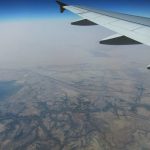 Our flight to Athens was in daylight and Paul spent much of the time looking out the plane window (pictured, above, right), and pointing out features of the land and waterways below. “Look,” he said as we flew over Iraq, “there’s the River Tigris…. and the Euphrates – so important in ancient Mesopotamia.” (A view from the aircraft is pictured at right.)
Our flight to Athens was in daylight and Paul spent much of the time looking out the plane window (pictured, above, right), and pointing out features of the land and waterways below. “Look,” he said as we flew over Iraq, “there’s the River Tigris…. and the Euphrates – so important in ancient Mesopotamia.” (A view from the aircraft is pictured at right.)
It’s fantastic how passenger flights these days provide video maps showing the route of the aircraft on which you’re flying. It really helps you to develop a feel for geography – especially when you can look out of the window and see the actual place which is visualised on the map.
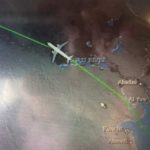 The map at right is a shot Paul Donnelly took with his mobile phone. He explained to me that it shows the part of the route we took beyond the coast of the Arabian Peninsula, past Kuwait and along the Tigris River. The Tigris then continues up to Baghdad, where the Euphrates River merges with it. We then continued up to Mosul, then turned west along the central length of Turkey before coming back over the sea at Chios, then past the south of Euboea and on to Athens. As Paul then added: ‘Magic!’
The map at right is a shot Paul Donnelly took with his mobile phone. He explained to me that it shows the part of the route we took beyond the coast of the Arabian Peninsula, past Kuwait and along the Tigris River. The Tigris then continues up to Baghdad, where the Euphrates River merges with it. We then continued up to Mosul, then turned west along the central length of Turkey before coming back over the sea at Chios, then past the south of Euboea and on to Athens. As Paul then added: ‘Magic!’
We arrived in Athens, collected our luggage, and headed out to catch the bus to Rafina. We couldn’t rush as we had a lot of luggage – including Paul carrying the bulky tripod legs for the dumpy (a surveyor’s level), which was balanced on his wheelie suitcase.
The 2.10pm bus to Rafina was pulling out as we reached the bus stop. We missed it by about 20 seconds. Oh well – comes with the territory. The next bus was at 3.20pm. So we headed back into the airport to enjoy a relaxing ‘frappe’ (iced coffee).
We headed back to the bus stop for the 3.20pm bus and found other Zagora team members there – Meg Miller and her two children, Anastasia and Matthew, and archaeologists Jane McMahon and Lea Alexopoulos. So we were lucky to have missed the earlier bus. We all headed out to the port of Rafina together on the bus.

From Rafina, we had to catch a ferry to the port of Gavrio on the island of Andros. We bought our tickets, and had an hour and a half or so to wait.
Paul rightly said that we had a tradition to upkeep (based on having done it once last year!) – to stop at a seafood cafe with tables on the pavement and enjoy some food and home-made ouzo. We all seconded the idea – in the interest of tradition – and selected tasty fare including garlic/herb bread, octopus, whitebait, smoky eggplant dip, tzatziki (garlicky yoghurt and cucumber dip), saganaki (fried Greek cheese) and Greek salad – all as fresh as.
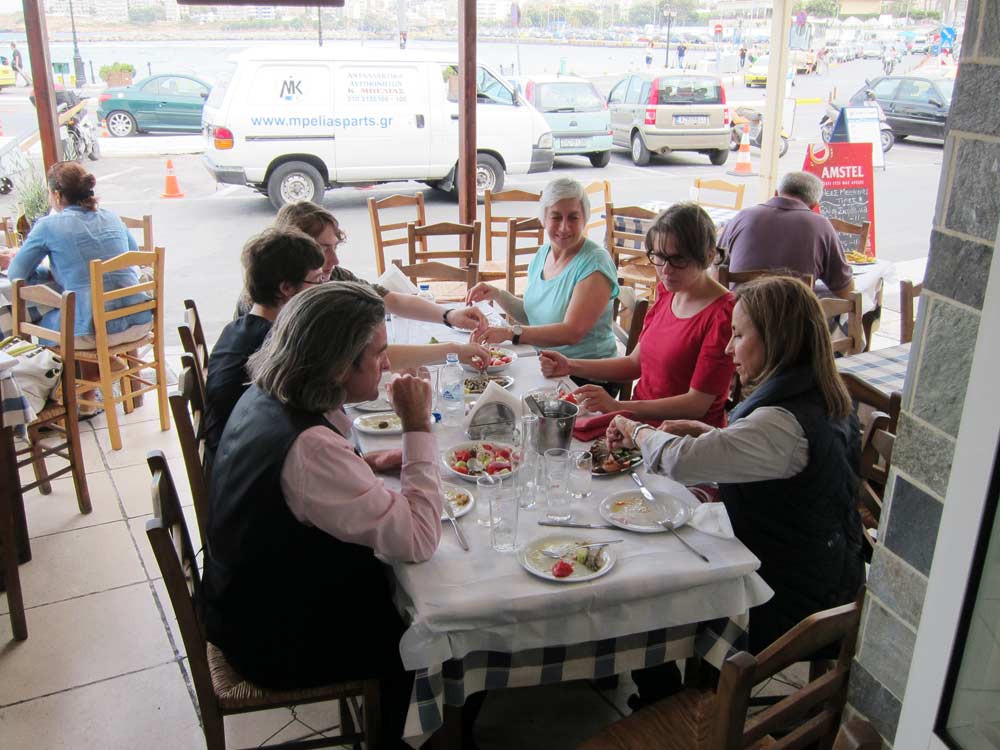
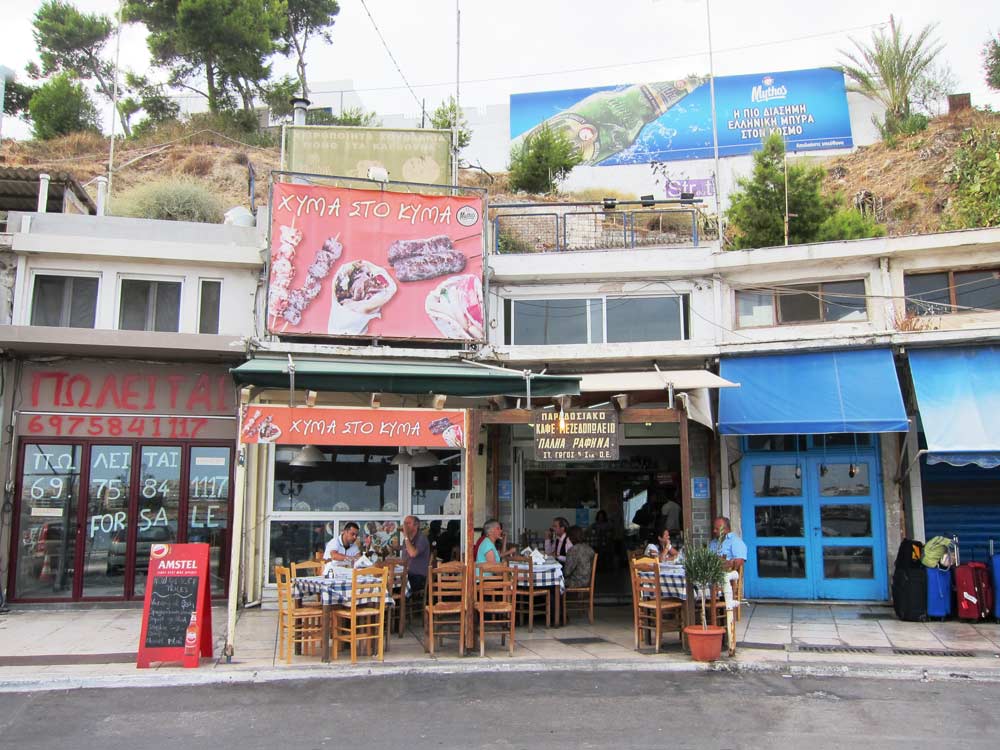
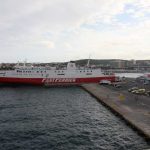 Then we made our way onto the ferry for our trip to Andros. These ferries are huge. The one, pictured at right, is just like the one we took to Andros. They can carry thousands of people and many vehicles including large trucks. Watching these giant vessels precision-manoeuvred into and out of ports is a reminder of the supreme maritime tradition of the Greeks. The huge ramp begins to lower before the craft reaches the wharf. It touches down gently, and people and vehicles begin to disembark seconds after the ship has docked. It really is poetry in motion – and they make it look so effortless.
Then we made our way onto the ferry for our trip to Andros. These ferries are huge. The one, pictured at right, is just like the one we took to Andros. They can carry thousands of people and many vehicles including large trucks. Watching these giant vessels precision-manoeuvred into and out of ports is a reminder of the supreme maritime tradition of the Greeks. The huge ramp begins to lower before the craft reaches the wharf. It touches down gently, and people and vehicles begin to disembark seconds after the ship has docked. It really is poetry in motion – and they make it look so effortless.
We spent most of the trip on the top deck in the open air until windswept became galeswept and we headed inside. We arrived at the port of Gavrio on the island of Andros about 7.30pm to be met by Lesley Beaumont, who had driven the van from Batsi to collect some of the people and luggage; the rest of us went on the bus, arriving at the Kantouni Pensione and Restaurant (where we stayed last year) about 8.30pm. The satisfying end of a long journey (it had taken me about 36 hours to get from my home north of Sydney to Batsi).
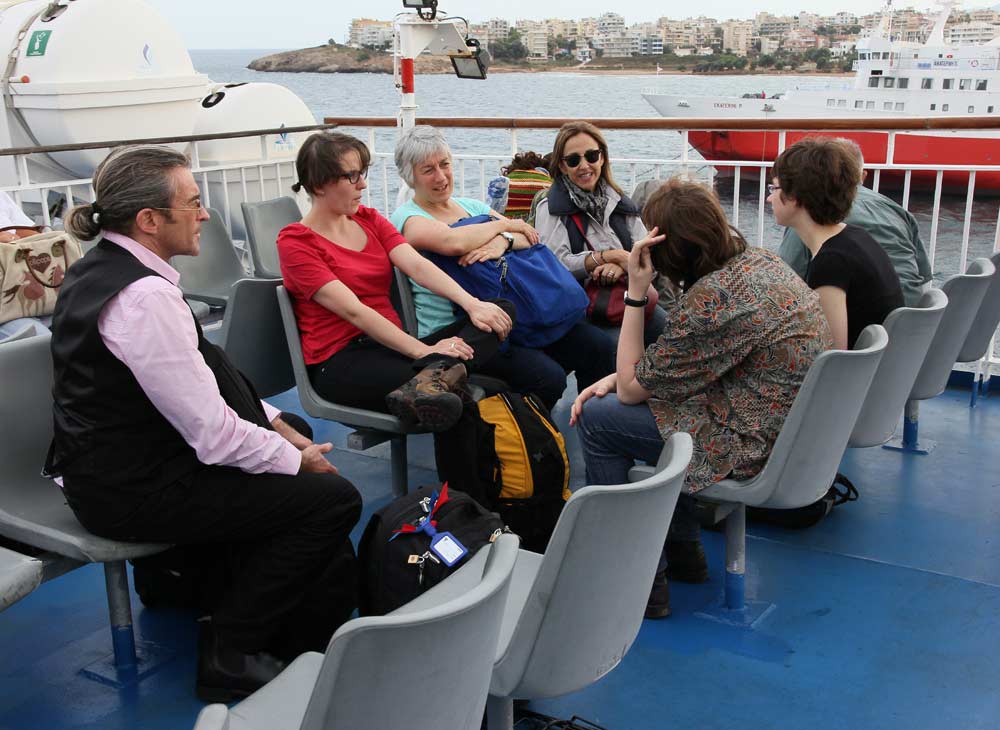
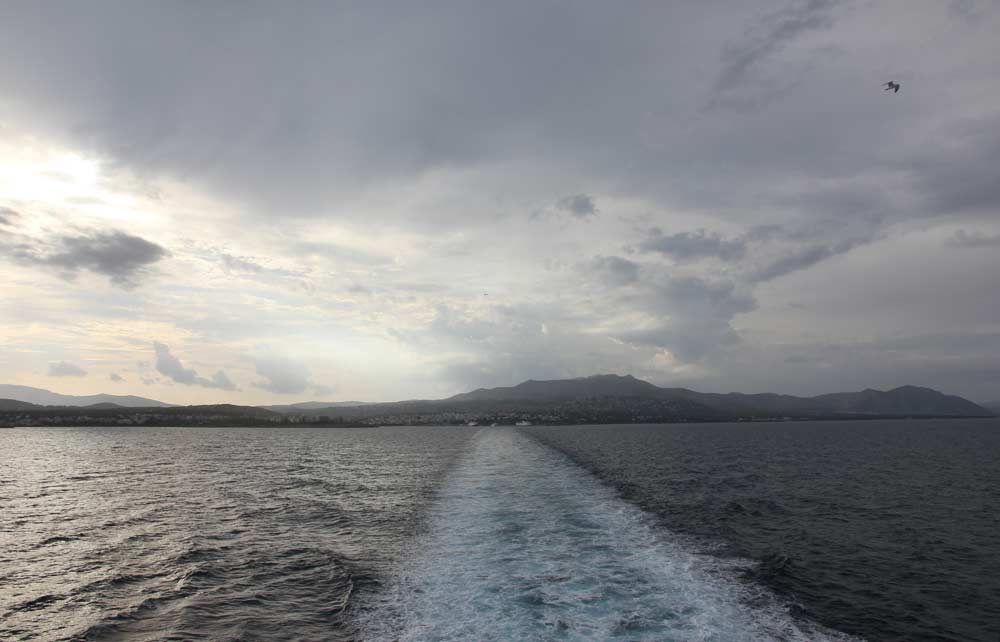
What can I say? If you have to work a long way from home – it may as well be on a Greek island….
Flight map photo by Paul Donnelly; all other photos by Irma Havlicek; all photos © Powerhouse Museum
